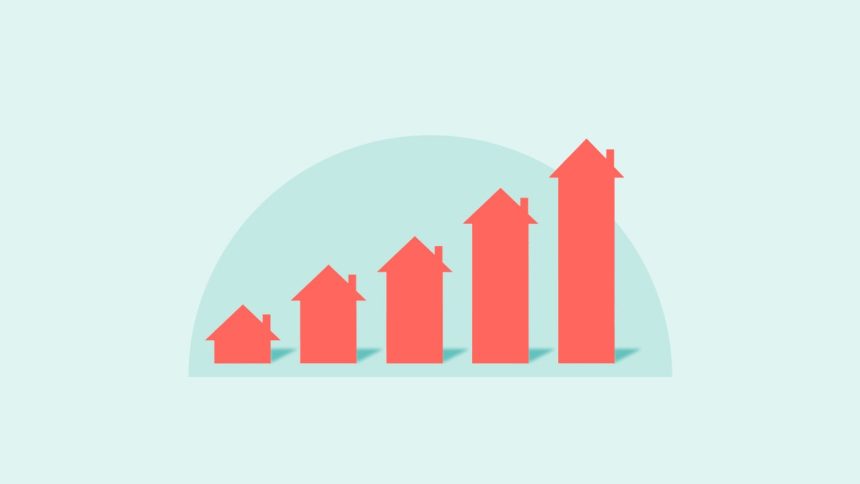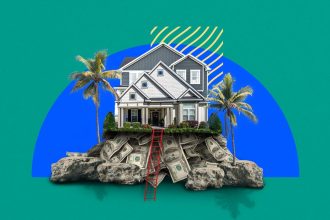Richard Drury/ Getty Images; Illustration by Austin Courregé/Bankrate
Home equity loan rates turned in a steady, if slightly mixed, performance this week. While the $30,000 home equity loan average stayed flat at 8.36 percent, the $30,000 HELOC (home equity lines of credit) averaged 8.69 percent — a new low for the year, according to Bankrate’s national survey of lenders.
“When the Fed cut rates not too long ago, that created a ripple effect that caused home equity loan and HELOC rates to drop a bit and they are continuing to trend downward,” says Seamus Nally, CEO of TurboTenant, a property management solutions provider. “The decision at the next Fed meeting will inform whether rates keep going down, stay even, or go back up.”
| Current | 4 weeks ago | One year ago | 52-week average | 52-week low | |
|---|---|---|---|---|---|
| HELOC | 8.69% | 9.26% | 9.02% | 9.33% | 8.69% |
| 15-year home equity loan | 8.38% | 8.49% | 9.00% | 8.80% | 8.37% |
| 10-year home equity loan | 8.46% | 8.56% | 8.99% | 8.83% | 8.46% |
| Note: The home equity rates in this survey assume a line or loan amount of $30,000. | |||||
What’s driving home equity rates today?
After hovering around 9 percent for more than a year, HE Loan and HELOC rates seem on a sustained downward course. Their moves are currently being driven by two factors: the Federal Reserve’s actions and lender competition, as they try to attract applicants with low-for-a-limited-time loan terms.
“The rates on existing borrowers’ HELOCs will shadow the Federal Reserve’s interest rate cuts, typically with a one-to-two month lag,” says Greg McBride, chief financial analyst at Bankrate. “The average rate available to new borrowers will also be influenced by the introduction—or expiration—of any promotional rate offers.”
McBride also notes that with the Fed’s recent half-point rate cut and the likelihood of another by year-end, HELOC borrowers can expect rates to continue to fall.
“HELOC rates will be sensitive to declining interest rates and borrowers will see rates steadily moving lower, even faster than fixed-rate home equity loans,” he says. “HELOC rates could fall faster than credit card rates, particularly if competition brings about introductory offers and if credit card issuers are skittish about delinquencies and slower to pass along lower rates.”
What influences home equity loan rates?
Several factors can influence rates on home equity loans and HELOCs.
Chief among them: changes to the Federal Reserve’s monetary policy. New home equity loans and HELOCs are tied to the prime rate, which tends to move alongside the benchmark interest rate that the Fed adjusts. As a result, when the Fed raises rates, borrowing costs on equity-based loans tend to go up. And the opposite happens when it lowers rates.
The Fed’s moves influence the general direction of interest rates not just for home equity loans, but also for consumer loans and financing in general. However, because they use your home as collateral, HELOCs and HELoan rates tend to be more akin to current mortgage rates — and much less expensive than the interest charged by credit cards and personal loans, which aren’t secured.
Comparing consumer loan rates
Of course, the Fed’s monetary policy influences interest rate trends overall and advertisements you see. However, the individualized offer you receive from a lender on a particular HELOC or new HELoan reflects an additional factor: your creditworthiness — specifically your credit score, debt-to-income ratio, and the value of the home you’re putting up as collateral.
Read the full article here














